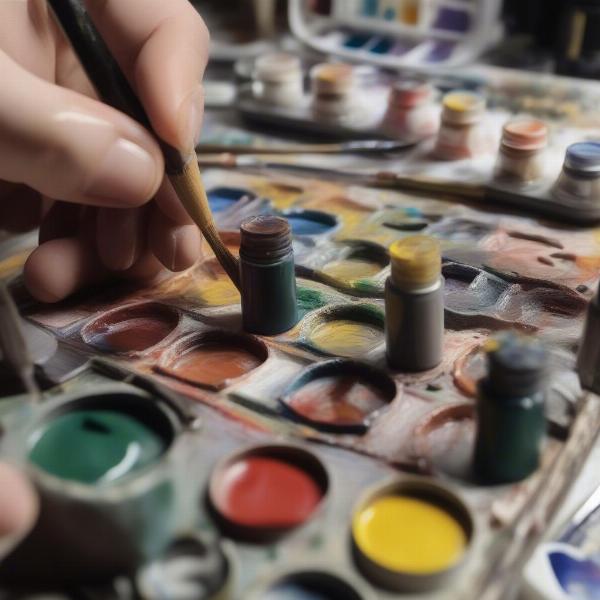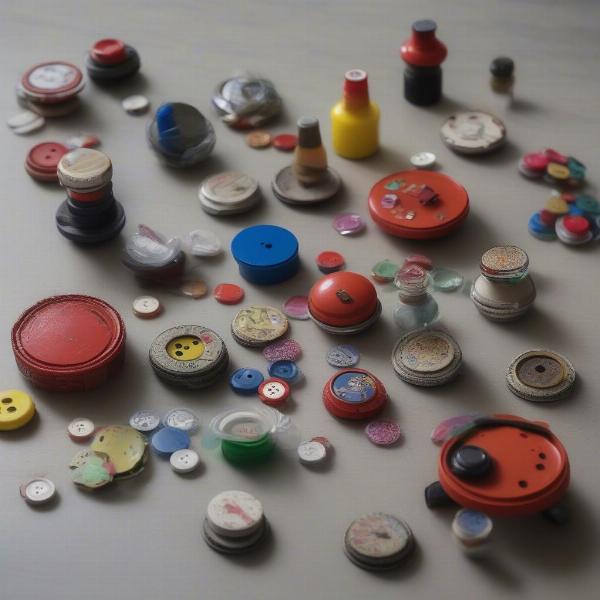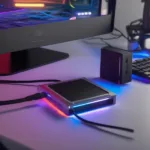Creating a compelling game piece is more than just slapping some paint on a bit of plastic. It’s a process that blends artistry, practicality, and a deep understanding of the game itself. Whether you’re crafting pieces for a board game, a tabletop RPG, or even a custom card game, the principles remain the same. This guide will walk you through the key steps in designing and creating your own unique game pieces, from initial concept to the final polished product.
Similar to discussions about when the next Resident Evil game comes out, the anticipation for a new game is often fueled by the excitement of its components, especially the game pieces.
Conceptualizing Your Game Piece
Before you dive into materials and techniques, take some time to brainstorm. What is the theme of your game? What role does each piece play? Should the pieces be representational (like miniature figures) or abstract (like colored cubes)? Consider the overall aesthetic and how the pieces will interact with the game board or other components. A well-designed game piece enhances the player experience, adding another layer of immersion and engagement.
 Game Piece Brainstorming Session
Game Piece Brainstorming Session
Choosing the Right Materials
The material you choose will impact the look, feel, and durability of your game piece. Common options include wood, plastic, metal, resin, and even clay. Each material has its own advantages and disadvantages. Wood is readily available and easy to work with, but can be prone to warping or splitting. Plastic is durable and can be molded into complex shapes, but can be more challenging to customize. Metal offers a premium feel, but can be expensive and require specialized tools. Consider your budget, the level of detail you require, and the overall aesthetic of your game when making your choice.
For a more in-depth understanding of gaming delays, check out this article about why the Oregon game was delayed.
Shaping and Sculpting Your Game Piece
Once you have your materials, it’s time to bring your vision to life. For simple shapes, you might be able to get away with pre-cut wooden blocks or plastic tokens. But for more intricate designs, you’ll need to delve into sculpting. Clay is a great option for beginners, allowing for easy manipulation and adjustments. For more permanent pieces, consider using epoxy putty or polymer clay, which can be baked or cured to harden. If you’re working with wood, you’ll need tools like saws, files, and sandpaper to carve and shape the pieces.
Adding Details and Finishing Touches
The details are what truly bring a game piece to life. Consider adding paint, decals, or even small embellishments like beads or gems. If you’re working with miniatures, painting techniques like dry brushing and washes can add depth and realism. A protective sealant can help preserve your hard work and ensure the pieces withstand the rigors of gameplay.
 Adding Paint and Details to Game Pieces
Adding Paint and Details to Game Pieces
Digital Fabrication: 3D Printing and CNC Machining
For complex designs or large-scale production, digital fabrication techniques like 3D printing and CNC machining can be game-changers. 3D printing allows you to create highly detailed pieces from digital models, while CNC machining offers precision and repeatability for working with materials like wood and metal. These technologies open up a whole new world of possibilities for game piece creation. You can even find online services that will print or machine your designs for you, making it easier than ever to bring your vision to reality.
You might also be interested in this post discussing the biggest fears in games.
Mass Production Considerations
If you plan to produce your game on a larger scale, consider the cost and efficiency of different manufacturing methods. Injection molding is a common choice for plastic pieces, while die-casting is suitable for metal. Working with a manufacturer can help you navigate the complexities of mass production and ensure your game pieces meet your quality standards.
This reminds me of the question, does PlayStation 2 play PlayStation 1 games? Compatibility is always a key factor to consider.
Alternative Methods for Creating Game Pieces
Beyond traditional crafting and digital fabrication, there are other creative ways to make game pieces. Consider upcycling existing materials, like bottle caps, buttons, or even small toys. You can also use found objects from nature, like stones or shells, to create unique and thematic pieces. Get creative and experiment with different materials and techniques to find what works best for your game.
 Creating Game Pieces from Upcycled Materials
Creating Game Pieces from Upcycled Materials
Bringing it All Together: Integrating Your Game Pieces
Finally, consider how your game pieces will interact with the other components of your game. The size, shape, and weight of the pieces can impact gameplay, so make sure they are well-suited to the game mechanics. The aesthetic of the pieces should complement the overall theme and create a cohesive and engaging experience for the players.
FAQs about Making Game Pieces
- What is the easiest material to use for making game pieces? Clay is a great starting point for beginners due to its malleability.
- Can I 3D print my own game pieces? Absolutely! 3D printing is a fantastic option for creating highly detailed pieces.
- What kind of paint should I use for game pieces? Acrylic paints are a popular choice for their versatility and durability.
- How can I protect my game pieces from wear and tear? Applying a sealant can help preserve the paint and prevent damage.
- Where can I find inspiration for game piece designs? Look to existing games, art, and even nature for inspiration.
- What are some common mistakes to avoid when making game pieces? Not considering the scale of the pieces in relation to the game board, and neglecting to test the durability of the materials.
- How can I mass-produce my game pieces? Working with a manufacturer is typically the best option for mass production.
Conclusion
Making your own game pieces can be a rewarding experience, allowing you to personalize your game and bring your creative vision to life. From brainstorming and material selection to sculpting, painting, and finishing, each step contributes to the final product. Whether you choose traditional crafting methods or embrace digital fabrication, the key is to experiment, have fun, and create game pieces that enhance the overall gaming experience. Remember, the perfect game piece is not just visually appealing, but also functional and contributes to the enjoyment of the game itself. Now go forth and create!

